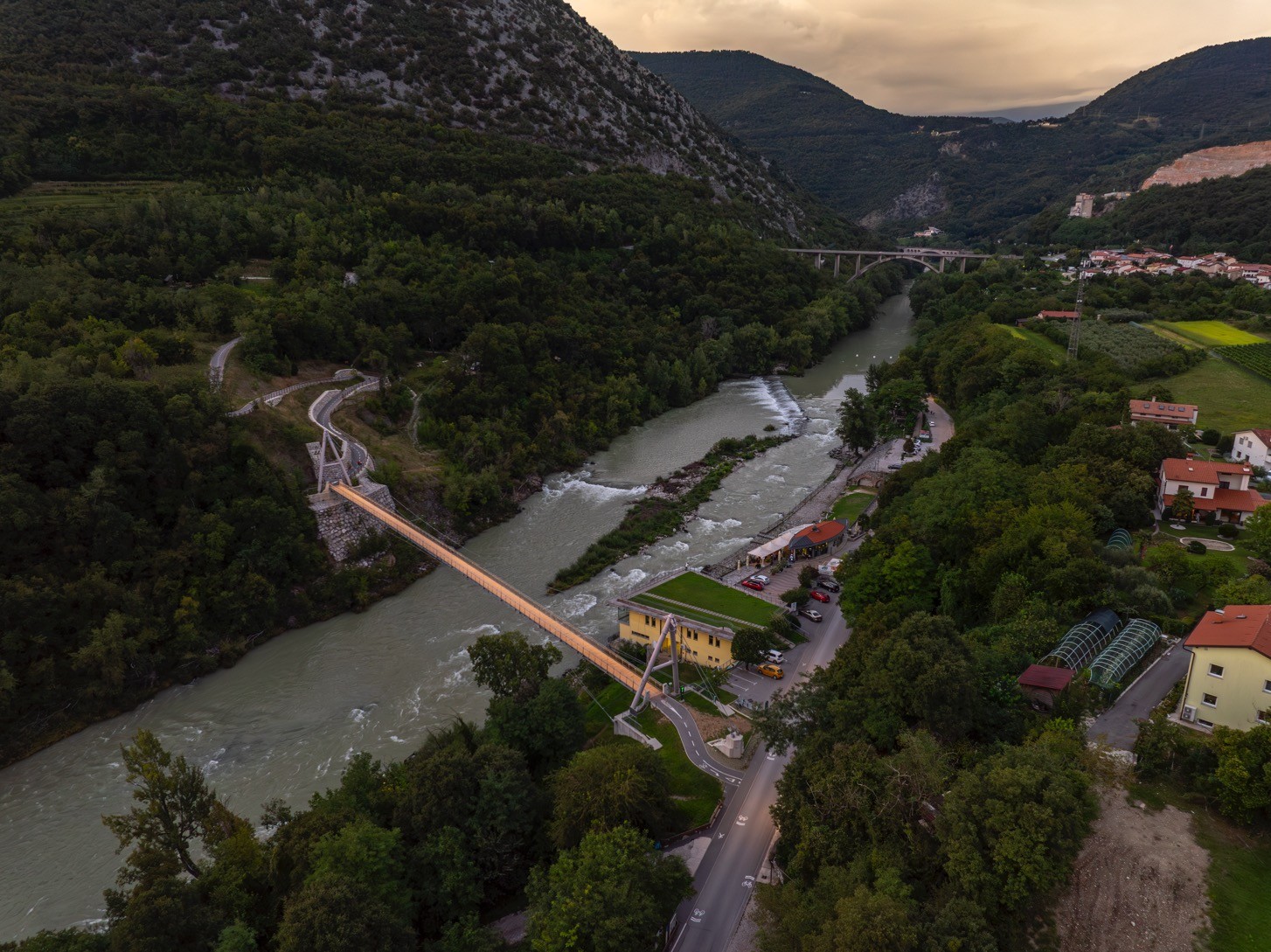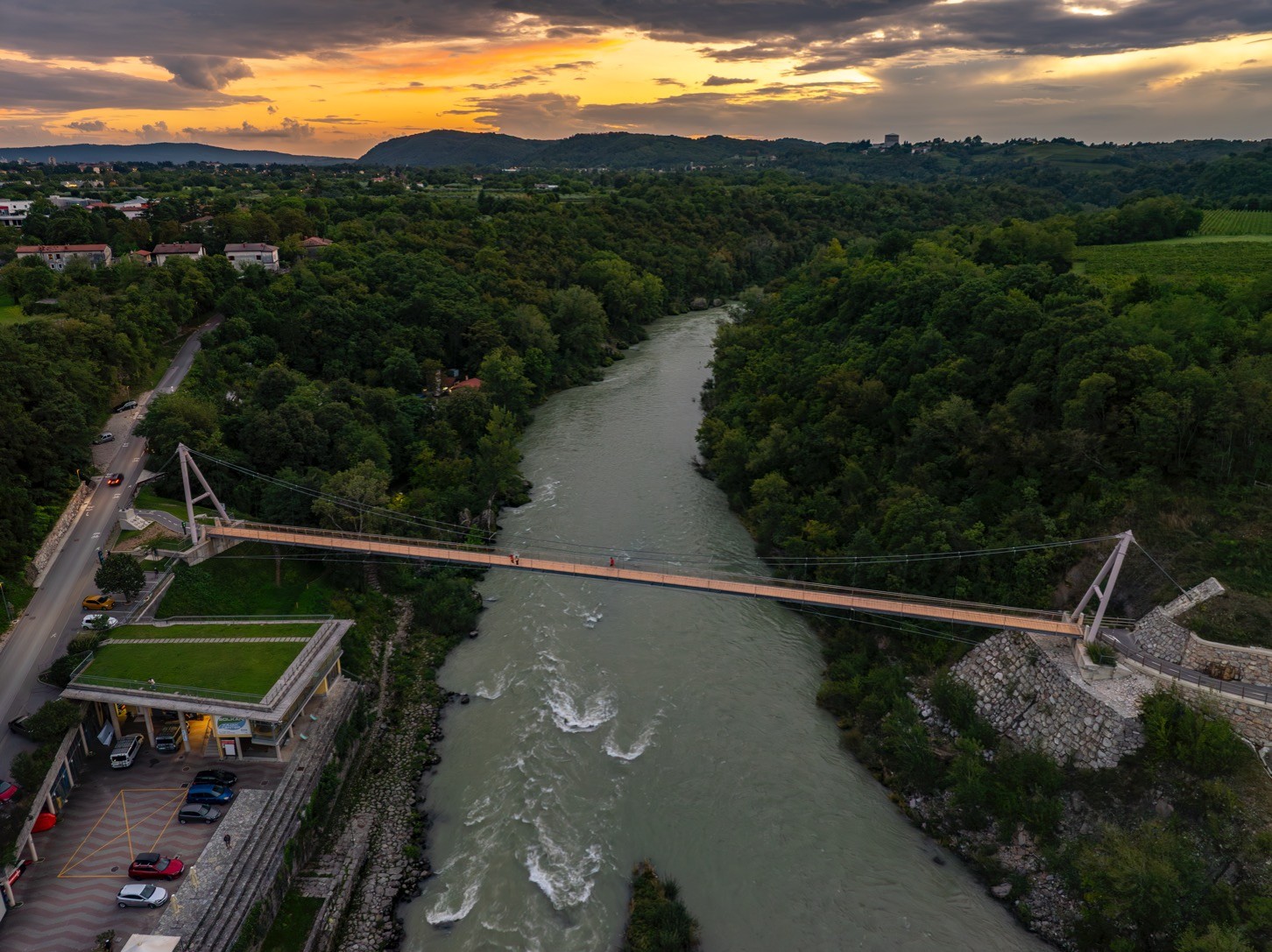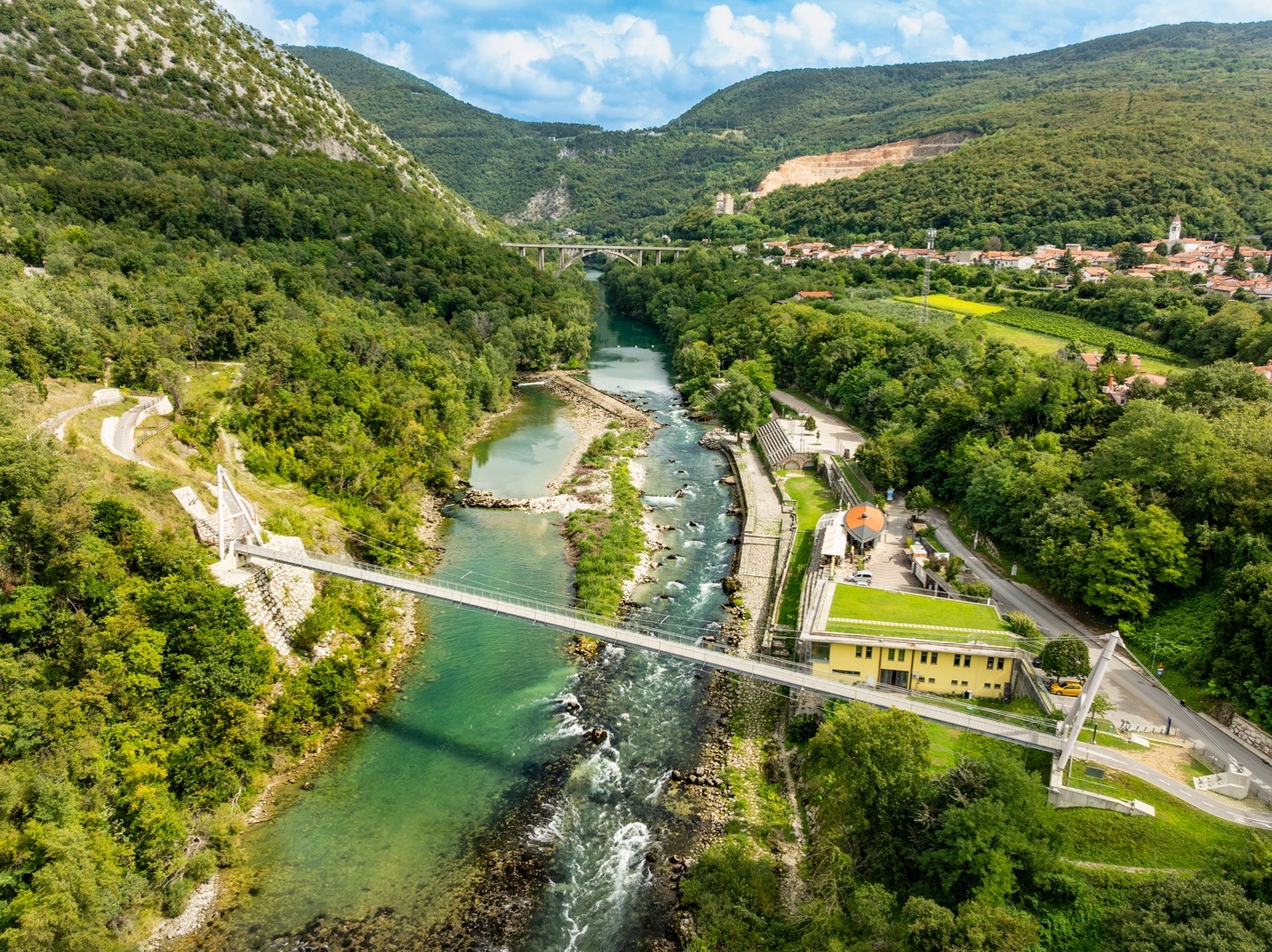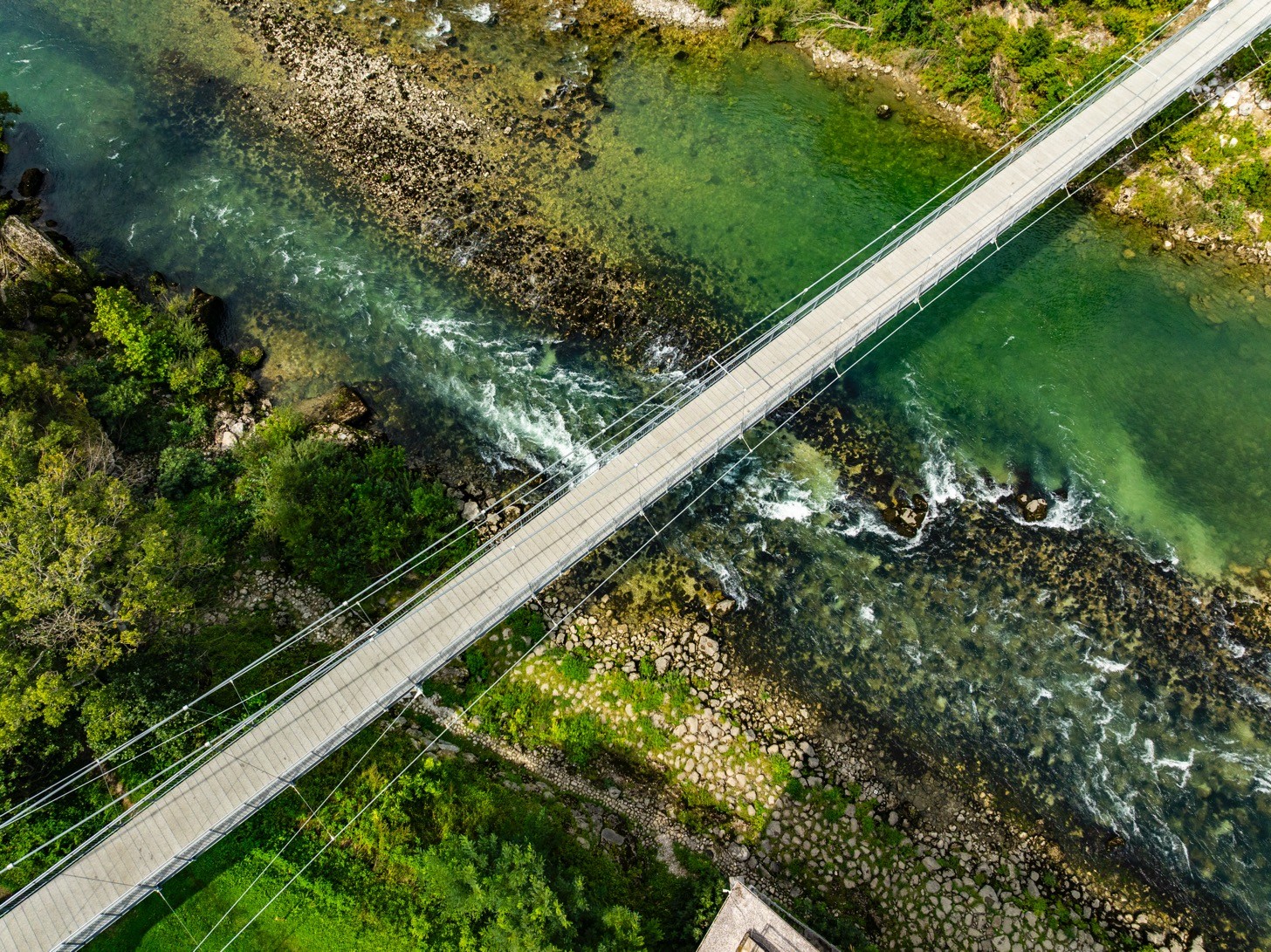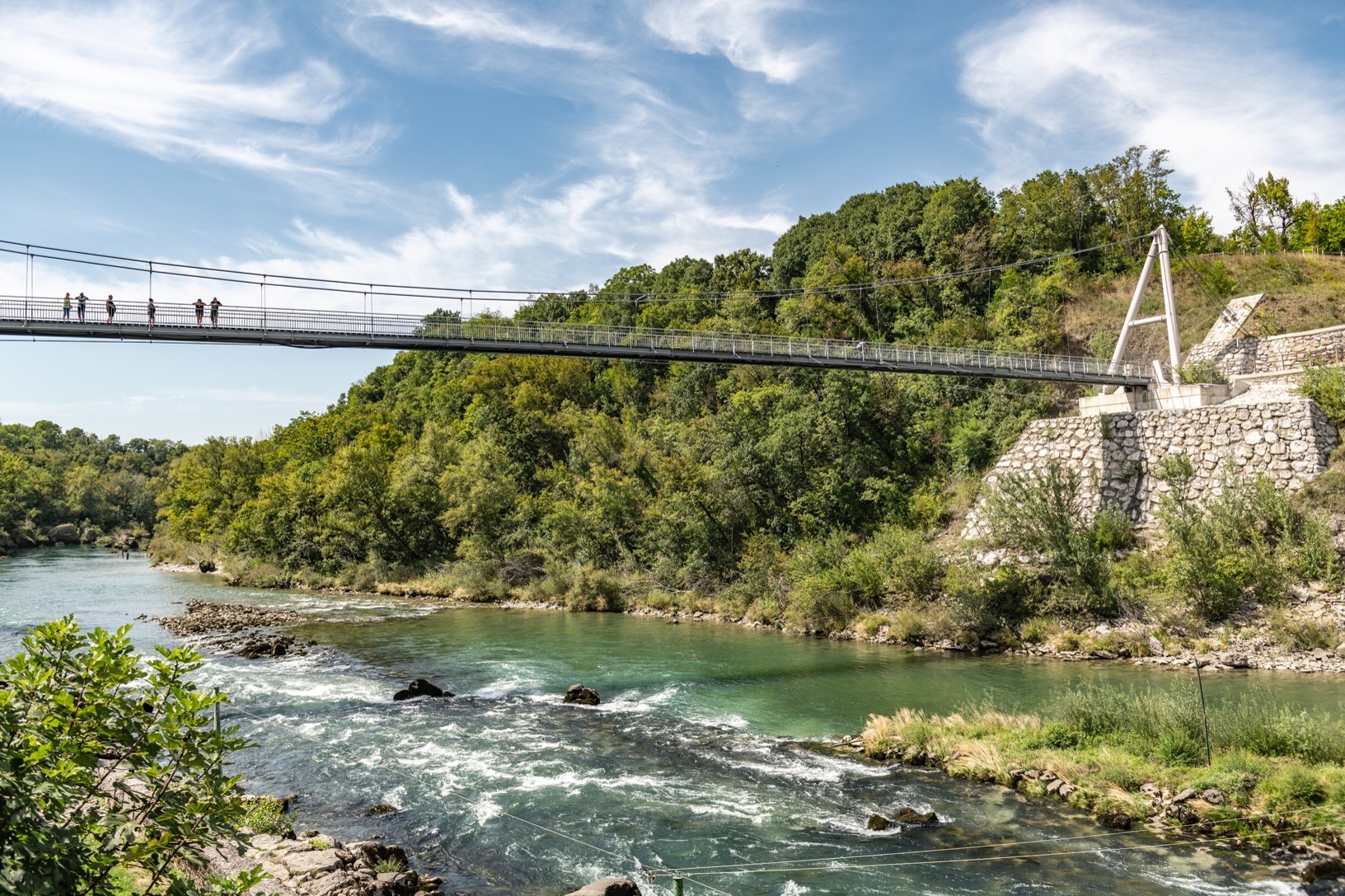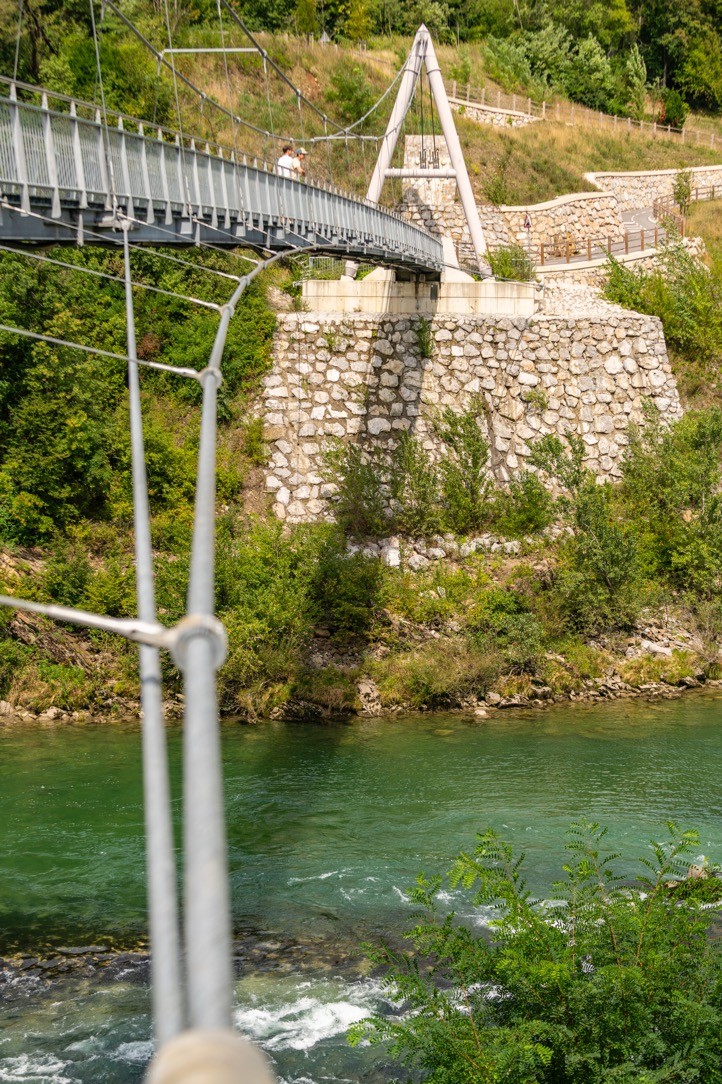salcano

Solkan Footbridge
Gorazd HUMAR
HISTORY
THE PEDESTRIAN AND CYCLING BRIDGE OFFERS EXCEPTIONAL VIEWS
The surroundings of the Solkan Kayak Center, located on the border with Italy, offer exceptional opportunities for sports tourism along the scenic Soča-Isonzo River. The cross-border protected area features a whitewater kayak course, the Plava-Solkan-Piedimonte cycle track, and hiking trails ascending Mount Sabotin (Monte Sabotino).As these sporting activities grew in popularity, it became clear that a dedicated pedestrian and cycling bridge was essential to connect the two banks of the Soča-Isonzo. The new suspension bridge, which opened on 14 October 2022, now serves as a key link, providing the sports centre with a vital connection that seamlessly integrates sporting activities along the Soča-Isonzo River across both Slovenian and Italian territories.
In the early 20th century, a watermill stood on the left bank of the Soča-Isonzo River, where the Solkan Kayak Center is located today. Crossing the river was vital for both mill workers and local residents who needed to access the Solkan railway station. Indeed, initially, people travelled from one bank to the other by boats and rafts. This changed in 1910 when an 80-metre wooden bridge that charged a toll was constructed. The structure endured multiple damages during World War I and, despite many repairs, was completely washed away by the Soča-Isonzo floods around 1920.
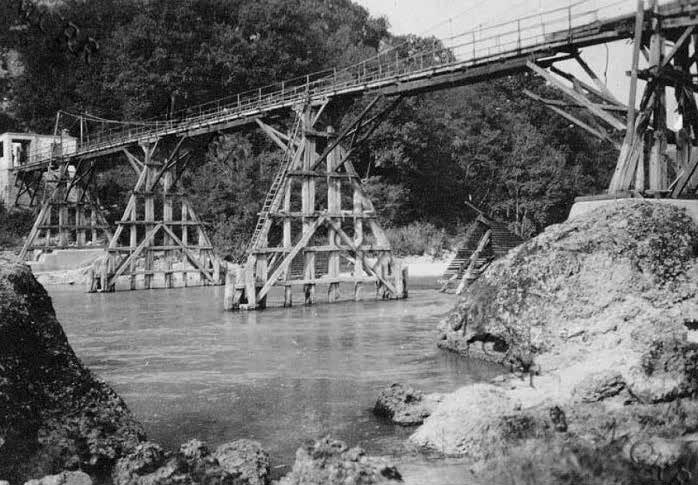

Photo by: Simon Monfardini
BRIDGE CONSTRUCTION AND STRUCTURAL ENGINEERING
The suspension bridge, anchored by two steel cables, spans 120 metres between its supporting towers. Rising 9 metres above the Soča-Isonzo River’s historically highest level, it ensures easy access to the bicycle path on the opposite bank. The bridge’s 3-metre width allows for smooth two-way traffic. Two A-shaped steel towers that rise 14.5 metres above the road level hold the bridge’s steel support cables. These cables anchor firmly into a foundation that extends deep into the inland slope. The walkway surface comprises 15 steel load-bearing elements—each 6 metres long—bolted together to create a robust structure. All steel components have been galvanised to ensure durability. The structure is stabilised against wind through a series of thinner steel cables to prevent lateral oscillations.Construction of the bridge began with installing the anchor and tower foundations, which enabled the placement of the main steel suspension cables between the riverbanks. Subsequently, the load-bearing steel components were systematically installed, secured to the pedestrian deck and connected to the longitudinal suspension system via vertical hangers.
BRIDGE CONSTRUCTION AND STRUCTURAL ENGINEERING
The suspension bridge, anchored by two steel cables, spans 120 metres between its supporting towers. Rising 9 metres above the Soča-Isonzo River’s historically highest level, it ensures easy access to the bicycle path on the opposite bank. The bridge’s 3-metre width allows for smooth two-way traffic. Two A-shaped steel towers that rise 14.5 metres above the road level hold the bridge’s steel support cables. These cables anchor firmly into a foundation that extends deep into the inland slope. The walkway surface comprises 15 steel load-bearing elements—each 6 metres long—bolted together to create a robust structure. All steel components have been galvanised to ensure durability. The structure is stabilised against wind through a series of thinner steel cables to prevent lateral oscillations.Construction of the bridge began with installing the anchor and tower foundations, which enabled the placement of the main steel suspension cables between the riverbanks. Subsequently, the load-bearing steel components were systematically installed, secured to the pedestrian deck and connected to the longitudinal suspension system via vertical hangers.

Photo by: Simon Monfardini
THE IMPORTANCE OF THE BRIDGE
The growing number of users quickly validated the bridge’s construction. Its implementation, advantageous from both technical and economic perspectives, has significantly enhanced the sports centre along the Soča-Isonzo River. The bridge has created new opportunities for tourism and sports activities at the Slovenia-Italy border, contributing to the sustainable development of the entire region. As an engineering achievement, this suspension bridge spans 120 metres—making it the longest crossing over the Soča-Isonzo River. From its centre, you can enjoy a unique view of the kayak race course, the distinctive arch road bridge, and the famous Solkan stone railway bridge. The bridge has improved access to the cycling path along the Soča-Isonzo’s right bank, further elevating this spectacular route that ranks among Europe’s finest cycling destinations.The bridge was built thanks to funding from the Interreg Italy-Slovenia 2014-2020 programme through the European Grouping of Territorial Cooperation EGTC GO.
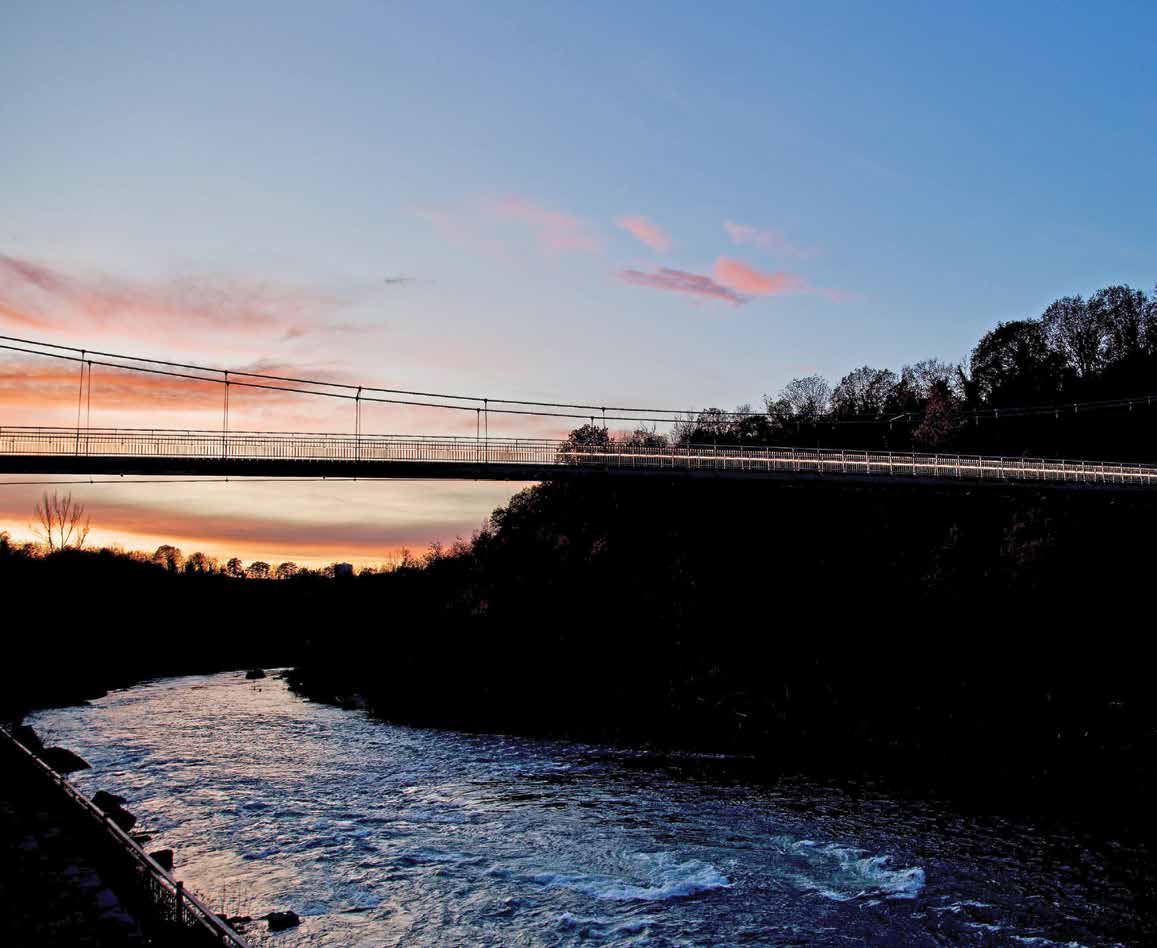
Photo by: Mladen Franko


Photo by: Simon Monfardini




